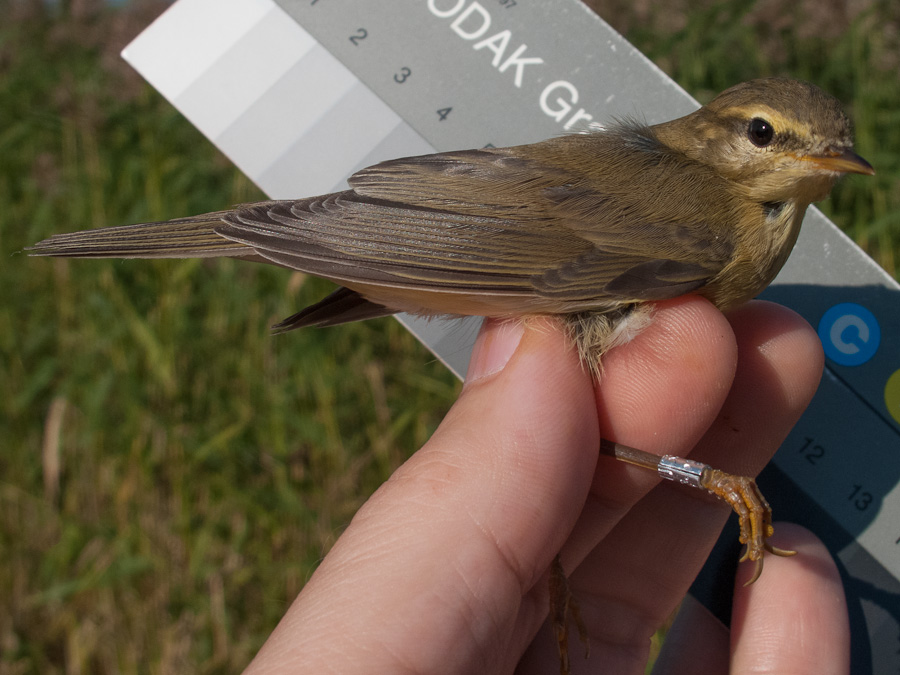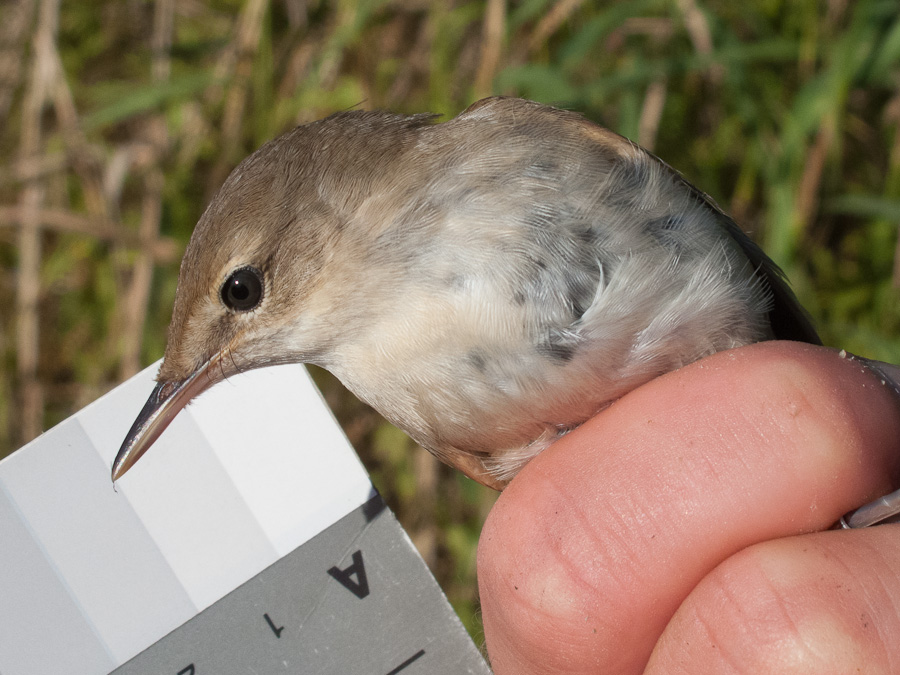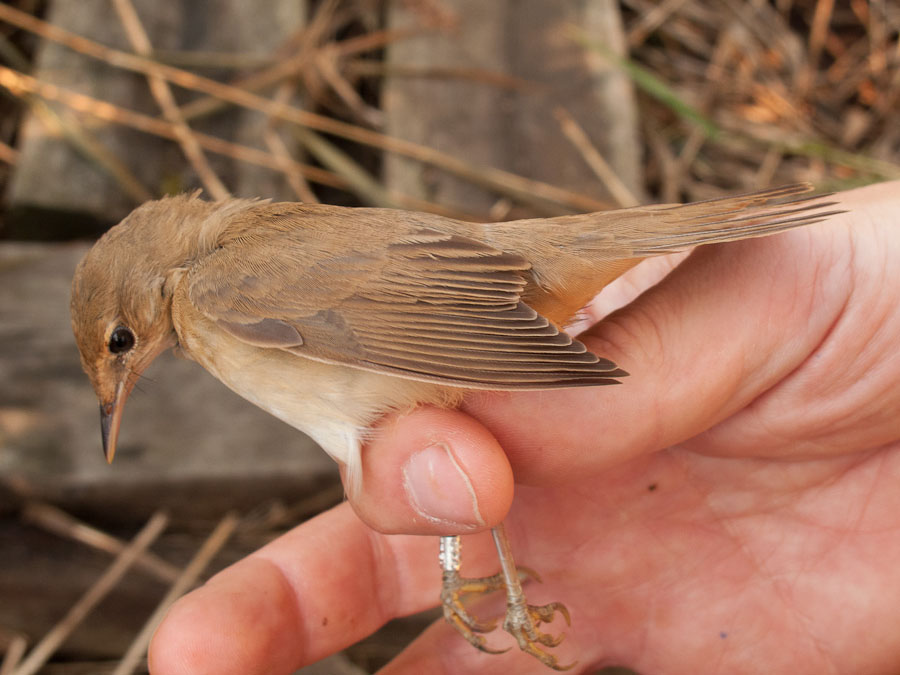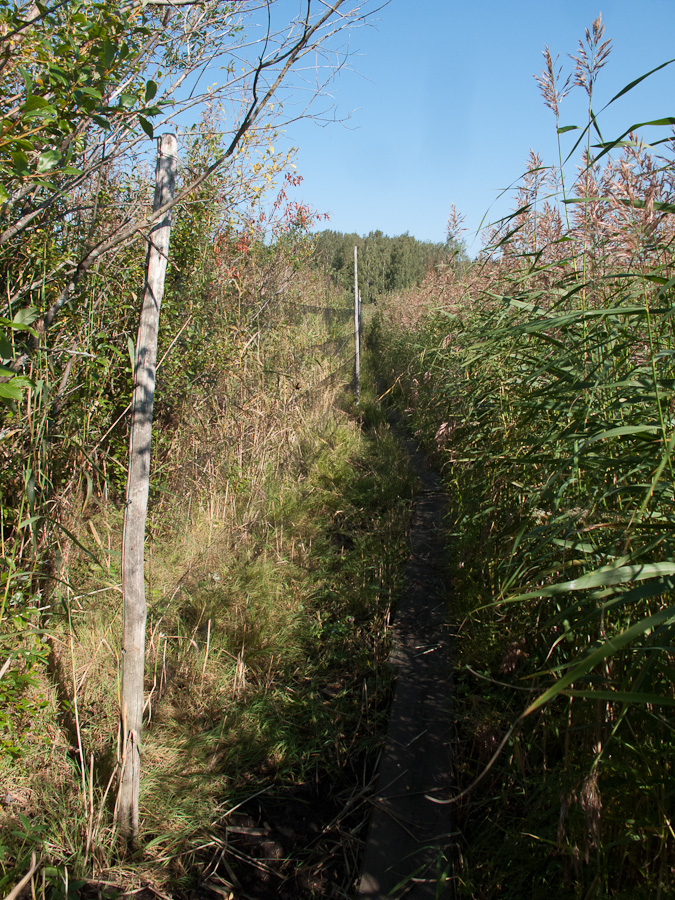Laajalahti 18 August 2012
A & A, Ina and Jussi attended today and put up the Acro nets. The temperature was +7C in the morning, calm, with the sun rising at 5.40. At 12.00 the temperature had again risen close to 25C, and the sun was shining. Once again good weather for ringing birds.
| yearlings ringed | older ringed | yearlings retrapped | older retrapped | |
| Red-backed Shrike | 4 | |||
| Sedge Warbler | 33 | 2 | ||
| Eurasian Reed Warbler | 3 | |||
| Blyth's Reed Warbler | 2 | 1 | ||
| Marsh Warbler | 4 | |||
| Willow Warbler | 49 | 3 | ||
| Chiffchaff | 1 | |||
| Lesser Whitethroat | 2 | |||
| Common Whitethroat | 1 | |||
| Great Tit | 4 | |||
| Blue Tit | 7 | 5 | 1 | |
| Eurasian Reed Bunting | 4 | |||
| Tree Pipit | 2 |
The total was 128 birds, with a similar result as on our previous visit. (Between these two days, Hannu et al ringed on Wednesday catching 172 birds). A good year for Willow Warbler and Red-backed Shrikes and a poor one for Sedge and Eurasian Reed Warbler. Sedge Warblers were fattening well for migration, and several will leave these reeds soon.

Young Willow Warblers are moving in large numbers just now.

This retrapped Blyth's Reed Warbler was in the highest fat score category and weighted 17.1 g. It may have accumulated as much as 6 g of fat and protein for the migration, and this should be enough for a 2000 km non-stop flight in favourable winds, so it will soon be close to the Caspian Sea. On the other other hand, this is the easier part of its long migration, with the Central Asian deserts and mountains surely much more challenging. The adults seem to leave this country soon after breeding without preparing for a long flight, and leave fattening until much later.

While most of the unstreaked Acrocephalus warblers are relatively straightforward to identify in the hand, there are regularly also more difficult individuals. This Marsh Warbler seemed somewhat rufous and darkish resembling Eurasian Reed in these traits. Also the wing length of 66mm was short for Marsh Warbler, and closer to the average of Eurasian Reed, and the length of the hindclaw, 6.9mm, fits Eurasian Reed better (which as a reed specialist has longer claws). However, short notches on the inner web of the second outermost primary (9.2 mm) and outer web of the third outermost primary, yellowish legs and claws and a short bill point to Marsh Warbler. Also, the overall colour, while more rufous than many Marsh Warblers, is still closer to that species.

The outermost net of the inner line, photographed towards the west.